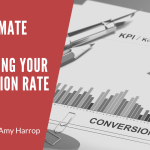Pinterest continues to be one of my favorite places to market printable products. The visual nature of the website and the easy sharing of content make it a fantastic (and affordable) way to market your printables.
The trick, of course, is knowing the best way to use Pinterest. That means doing the right things and (who would have figured?) NOT doing the wrong things. To help you maximize sales from marketing your printables on Pinterest, here are the Dos and Don’ts as I see them.
DO: Post High Quality Images
If you know anything about Pinterest, you know that it’s an image-driven site. That means you cannot afford to post images that look haphazard or unprofessional. They should be clean and clear, and when product pictures are involved, they should show your products off to their best advantage.
DON’T: Pin Only Your Own Products
Product creators sometimes forget the “social” aspect of social media. While Pinterest is a wonderful marketing tool, it is first and foremost a social media site. For Pinterest marketing to be effective, you must participate in the right way, and that means pinning images from relevant sources. This type of content curation is a good way to attract new followers and customers.
DO: Upgrade to a Business Account
One of the most common mistakes that solo entrepreneurs make is to use their personal social accounts for marketing. While there’s nothing wrong with letting your friends know about your products, upgrading to a professional Pinterest account gives you access to an array of tools – including promotion and advertising options – that aren’t available with personal accounts.
DON’T: Settle for a Lackluster Profile
Your profile is the best way to let your Pinterest followers know who you are and what you do. That means you’ll need a compelling profile picture and cover image, as well as a vivid description that uses your most important keywords. It goes without saying that you should link to your website or Etsy shop, as well.
DO: Use Rich Pins
Whenever you post images of your products, you should be using Rich Pins. Rich Pins allow you to show your followers detailed product information when they see your pin. For example, you can show them the product’s price, availability, and product details, making it easier for them to take the next step – and buy it!
DON’T: Pin to Your Home Page
The purpose of marketing on Pinterest is that it can help to increase interest in your products and lead to more sales. For that reason, it’s not a good idea to Pin images that link back to your home page. It can lead to a high bounce rate when people who click don’t find themselves where they want to be.
DO: Pin Directly to Your Product Pages
If Pinning images directly to your home page isn’t a good idea, then Pinning to your product pages is the opposite. Pinning to your product pages means that anybody who clicks on a Rich Pin of your product will be led directly to the page where they can buy it. Remember, in marketing, the goal is to eliminate friction and make it simple for people to buy your products.
DON’T: Keep Pinterest Separate from Other Marketing
There’s plenty of evidence to suggest that cross-posting content between your website and social media accounts is the best way to keep your audience engaged. When you put content on Pinterest, don’t forget to cross-post it on Facebook or Instagram. Sharing content across multiple platforms will help you to maintain a consistent brand and allow you to maximize your reach by ensuring that your followers have the best possible chance of engaging with your content.
DO: Optimize Your Captions
When people search for products like yours on Pinterest, you want to be sure they can find what you’re selling. That means doing keyword research and using the words in your captions that will make your content searchable. Fortunately, Pinterest itself is a useful tool for keyword research. You can use the search function to find products like yours and use the captions on them for keyword inspiration.
DON’T: Post Inconsistently
Social media algorithms are designed to highlight the content that users are most likely to engage with and for that reason, it’s important to post regularly and consistently. You don’t necessarily need to post on Pinterest every day, but if you do, you’re likely to get more engagement (and more sales) than you would if you posted only a few times a week.
DO: Take Advantage of Social Media Scheduling Tools
Posting every day might seem like a lot of work but you can minimize the amount of time you spend on Pinterest by using a scheduling tool to schedule your Pins. You could potentially set aside an hour or two a week and create and schedule all your posts in that time. Then, you would be sure that your posting is consistent and that your followers know when to expect content from you.
DON’T: Ignore Your Analytics
While Pinterest marketing is easy, it’s not fool proof. If you want to get maximum engagement and boost the sales of your printable products, you’ll need to pay attention to which Pins get the most engagement. Pinterest analytics allow you to examine the results you get with each Pin and evaluate your Pinterest marketing strategy accordingly. By paying attention to analytics, you’ll be able to get the biggest possible bang for your marketing bucks.
DO: Use a Secret Board for Content You’re Not Ready to Post
One of the most common mistakes people make on Pinterest is posting incomplete boards. Instead of doing that, create a secret board that only you can see to collect Pins and content and prepare it for posting. You can then access the board and post content according to your schedule.
Conclusion
Pinterest is in many ways the ideal social media site for sharing and selling printable products. Its visual nature, combined with its army of eager-to-buy users, can help you to improve your brand recognition, get the word out about your store, and ultimately, increase your sales.
Are you ready to take your brand to the next level? I’m here to help! Click here to learn how to work with me.



